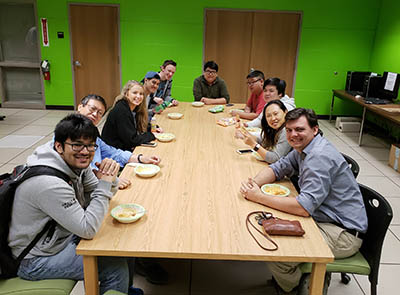Bachelor's Degree in Computer Game Development
The B.S. in Computer Game Development degree at Lamar University is the only dedicated four-year degree program at a Texas public university that prepares you for a career in game programming.
Lamar University recognizes that the best game programmers are highly knowledgeable in both theory and practical aspects of computer science and adopts this approach to prepare you for a game programming career.
The B.S. in Computer Game Development degree is similar to Lamar’s B.S. in Computer Science Degree (BSCS). Both degrees train students in software development techniques. The primary difference between the two is the game degree requires eight courses not required by the BSCS degree. 
The courses are:
- The Art of Computer Game Development
- Mobile Game Development
- 3D Modeling for Computer Graphics
- 3D Animation for Computer Graphics
- Computer Game Development I
- Computer Game Development II
- Computer Graphics
- Artificial Intelligence
For more information contact the Lamar University Department of Computer Science at cs@lamar.edu.
Texas Job Prospects

In Texas, several universities have sought to attract students with bachelor’s level games-related degrees in art and technology. The common feature of these degrees is they focus heavily on art and design and do not contain the core components typically found in a traditional computer science degree. Students graduating from these programs do not necessarily have the preparation necessary to land jobs as game programmers.
Job prospects for game programmers are very good. Jobs website Monster.com typically lists over 1,000 jobs for “game programmer.” Another job source is the Texas Film Commission’s Job Hotline.
Game Developer Salaries
$50 - 100K
$44 - 120K
$35 - 90K
(source: 2019 Game Industry Career Guide)
Texas is a leading state in the nation for computer game development and is home to over 180 publishing and development companies including Bethesda Game Studios, BioWare, Blizzard Entertainment, Electronic Arts, Epic Software, Gearbox Software, iD Software and Zynga. For students seeking both education and a chance for in-state internship opportunities, Texas is the place to be. According to the Entertainment Software Association, the U.S. games industry is one of the nation’s fastest growing economic sectors with sales exceeding $30 billion annually.